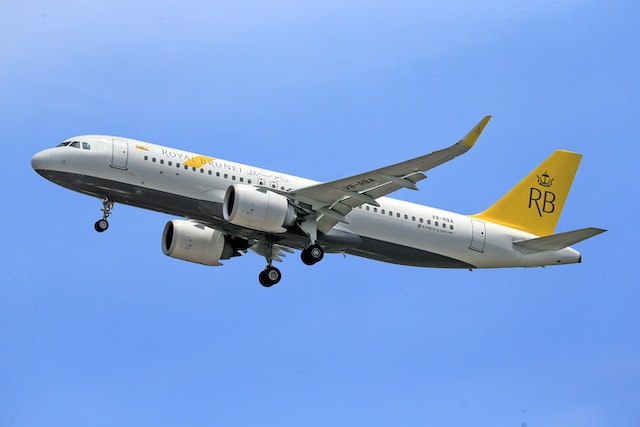The Quiet Revolution: Electric Airplanes Are Coming to a City Near You & The Next Big Thing in Aviation
Key points
Electric airplanes have the potential to revolutionize the aviation industry. They are much more efficient than traditional airplanes, produce zero emissions, and could be cheaper to operate.
- The Benefits of Electric Airplanes
- The Challenges of Electric Airplanes
- Bad Taxation and Pricing Policies
- Opportunities
- Companies that are working
The Quiet Revolution: Electric Airplanes Are Coming to a City Near You & The Next Big Thing in Aviation
Electric Airplanes: More Efficient But Bad Taxation and Pricing
Electric airplanes have the potential to revolutionize the aviation industry. They are much more efficient than traditional airplanes, produce zero emissions, and could be cheaper to operate. However, the development of electric airplanes is being held back by bad taxation and pricing policies.
The Benefits of Electric Airplanes
Electric airplanes have several advantages over traditional airplanes. They are much more efficient, meaning that they can fly farther on a single charge. This is because electric motors are much more efficient than jet engines. Electric airplanes also produce zero emissions, which could help to reduce air pollution. Additionally, electric airplanes are potentially cheaper to operate than traditional airplanes. This is because they do not require fuel, which is a major cost for airlines.
The Challenges of Electric Airplanes
Despite the advantages, there are also some challenges to the development of electric airplanes. One challenge is the weight of the batteries. The batteries need to be large and powerful enough to power the aircraft, but they also need to be lightweight in order to improve the aircraft's range. Another challenge is the charging time. It can take several hours to fully charge an electric airplane, which can limit its usefulness for long-haul flights.
Bad Taxation and Pricing Policies
One of the biggest challenges to the development of electric airplanes is bad taxation and pricing policies. Currently, there are no taxes on jet fuel, which makes it much cheaper to operate a traditional airplane than an electric airplane. Additionally, the electricity used to charge electric airplanes is often taxed at a higher rate than the gasoline used to fuel traditional airplanes. This makes it even more expensive to operate an electric airplane.
How to Fix the Problem
There are a number of things that can be done to fix the problem of bad taxation and pricing policies. One solution is to tax jet fuel at the same rate as electricity. This would make it more expensive to operate a traditional airplane, and would make electric airplanes more competitive. Another solution is to provide subsidies for the development and operation of electric airplanes. This would help to offset the higher costs of electric airplanes and make them more affordable.
The Future of Electric Airplanes
The future of electric airplanes looks bright. With continued advances in battery technology and charging infrastructure, electric airplanes could become a major part of the aviation industry in the years to come. However, bad taxation and pricing policies are holding back the development of electric airplanes. If these policies are fixed, electric airplanes could have a major impact on the aviation industry and help to reduce air pollution.
In addition to the points mentioned above, here are some other ways to make electric airplanes more viable:
- Develop lighter and more powerful batteries. This is the most important challenge to overcome, as it would allow electric airplanes to fly farther and carry more passengers.
- Improve the charging infrastructure. There needs to be a network of charging stations available at airports and other strategic locations.
- Educate the public about the benefits of electric airplanes. Many people are still not aware of the potential of electric airplanes, and this could slow down their adoption.
With continued investment and innovation, electric airplanes have the potential to revolutionize the aviation industry and make air travel more sustainable.
Challenges
- Weight of batteries: The batteries are the heaviest component of an electric airplane, and they can significantly limit the aircraft's range. This is because the batteries need to be large and powerful enough to power the aircraft, but they also need to be lightweight in order to improve the aircraft's performance.
- Charging time: It can take several hours to fully charge an electric airplane, which can limit its usefulness for short-haul flights. This is because the batteries need to be charged slowly in order to avoid overheating.
- Cost: Electric airplanes are currently more expensive to develop and operate than traditional airplanes. This is because the batteries are expensive, and there is not yet a well-established charging infrastructure.
- Airworthiness certification: Electric airplanes are subject to the same airworthiness certification requirements as traditional airplanes. This can be a challenge for electric airplanes, as the batteries are a new and untested technology.
Opportunities
- Reduced emissions: Electric airplanes produce zero emissions, which could help to reduce air pollution. This is a major benefit, as air travel is a major source of greenhouse gas emissions.
- Quieter operation: Electric airplanes are much quieter than traditional airplanes, which could make them more appealing for use in urban areas. This is because electric motors are much quieter than jet engines.
- Potential for lower operating costs: As battery technology improves and the charging infrastructure is expanded, the operating costs of electric airplanes could become lower than those of traditional airplanes. This is because electric airplanes do not require fuel, which is a major cost for airlines.
The development of electric airplanes is still in its early stages, but it is a promising area of research. With continued advances in battery technology and charging infrastructure, electric airplanes could have a major impact on the aviation industry in the years to come.
Few of the companies that are working on developing electric airplanes:
- Airbus: Airbus is developing the E-Fan X, a hybrid-electric aircraft that is still under development. It is a modified version of the A320neo and is expected to have a range of 400 nautical miles.
- VoltAero: VoltAero is developing the Cassio, a nine-seater hybrid-electric aircraft that is designed for regional flights. It has a range of 500 nautical miles.
- Zunum Aero: Zunum Aero is developing the 10-seater Zunum Aero 10, an electric aircraft that is designed for short-haul flights. It has a range of 150 nautical miles.
- Ampaire: Ampaire is developing the Electric EEL, a six-seater electric aircraft that is a conversion of a Cessna 337 Skymaster. It has a range of 160 nautical miles
- Lilium Jet: Lilium is developing the Lilium Jet, a five-seater electric vertical takeoff and landing (eVTOL) aircraft. It has a range of 300 nautical miles.
These are just a few of the many companies that are working on developing electric airplanes. As the technology continues to improve, we can expect to see more and more electric airplanes on the market in the coming years.
Writer
Devraj Gorai
Tags
#electricairplanes #eplanes #greenaviation #sustainableaviation #zeroemissionaviation #cleanaviation #efficientaviation #betteraviation #futureofaviation #innovationinaviation #technologyinaviation #sustainabilityinaviation #batterytechnology #charginginfrastructure #airworthinesscertification #reducedemissions #quieteroperation #potentialforloweroperatingcosts
























